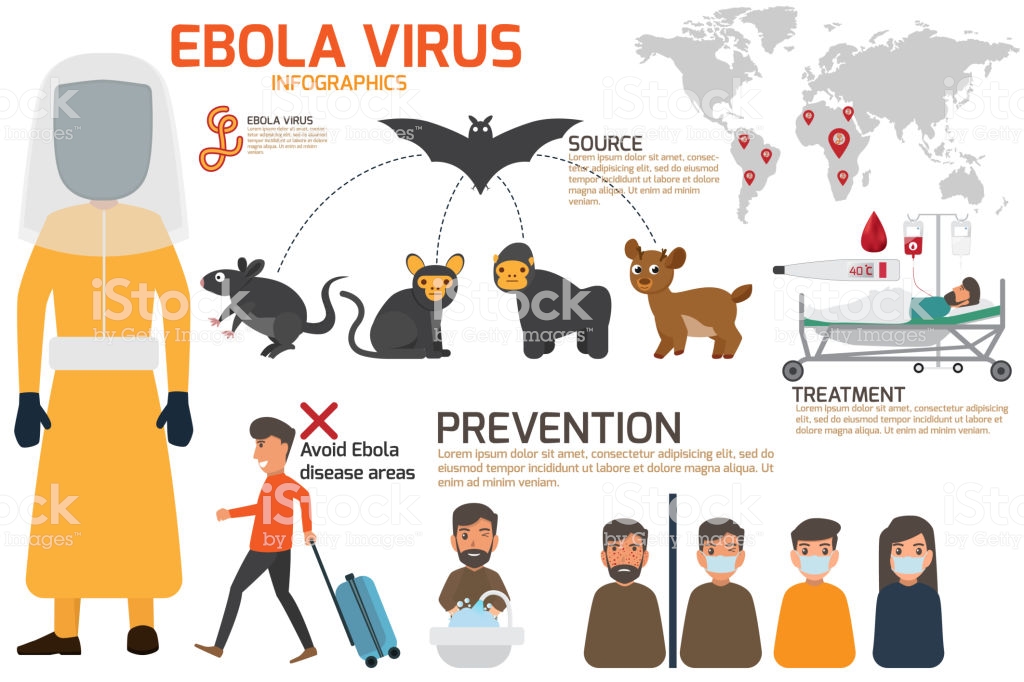Ebola virus disease is related to humans and other primates, and it almost takes two days to show its signs and symptoms. It is a highly risky disease and the Ebola hemorrhagic fever is really fatal for humans. Usually, wild animals carry this virus and transmit it to human population, where it further spreads through human-to-human transmission. The fatality date under this disease is almost 50%, but this rate can vary according to the rural and urban areas. Typical signs and symptoms are fever, sore throat, muscle pain and headaches. The patient may experience vomiting, diarrhea and rash, along with the effects of the functionality of the liver and kidneys. Some time patient starts both internal and external bleeding, and the situation can be fatal for the patient.
Transmission of Ebola Virus
Among humans, the Ebola disease is transmitted through direct contact with the body fluids or the blood of the person suffering with disease or developing the symptoms of this disease. Saliva, mucus, vomit, feces, sweat, tears, breast milk, urine and semen are the body fluids that usually contain Ebola viruses. A very sick person can spread this disease with saliva, but the whole virus could not spread through sweat. Nose, mouth, eyes, open wounds, cuts and abrasions are the main entry points for the virus. Needles and syringes with virus containments can also transmit the infection. In the dry state, the virus can survive for a few hours only, but it can survive for a few days in the body fluids.
Symptoms of Ebola Virus Disease
The incubation period is the interval taken by the virus to onset symptoms is 2 to 21 days. Humans can’t get infection without developing symptoms and the sudden onset symptoms are fever fatigue, muscle pain, sore throat and headache. These symptoms may follow by vomiting, diarrhea and rash, along with the symptoms of blighted kidneys and liver. Some other symptoms are blood in the stools, emission from the gums, low white blood cells and platelet counts.
Diagnosis for Ebola Disease
The symptoms of Ebola virus disease is quite similar to different other infectious diseases, like malaria, typhoid fever and meningitis. With the help of following tests, you can discriminate Ebola virus infection:
- Virus segregation by cell culture
- Electron microscopy
- Serum neutralization test
- Antibody incarcerate enzyme-linked immunosorbent assay (ELISA)
- Reverse transcriptase polymerase chain reaction (RT-PCR) assay
- Antigen capture exposure tests
It will be highly risky to get samples from patients; therefore it is important to get the samples under maximum biological containment conditions.
Treatment and Vaccines
There are different treatments according to the specific symptoms to improve survival rates, such as supportive care-rehydration with oral or intravenous fluids. There is no specific treatment for the Ebola Virus Diseases. Some possible treatments are immune therapies, drug therapies and blood products. Licensed vaccines are not available till date, but there are two prospective vaccines that are going through the phase of human phase safety testing.





